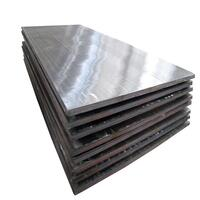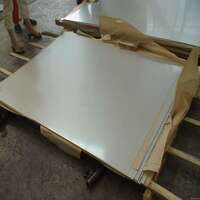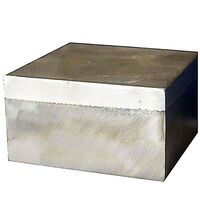1. Introduction
Just 24 hours ago, the U.S. Green Building Council announced a new pilot program promoting the use of recycled-content metal cladding in LEED-certified projects—a move that underscores the growing role of sustainable metal clad systems in modern construction. As architects and builders increasingly turn to durable, low-maintenance exteriors, understanding what ‘metal clad’ really means—and how it’s used—has never been more relevant.

Whether you’re designing a steel clad house, specifying a corten steel facade, or selecting metal clad electrical wire for a commercial build, the term ‘metal clad’ spans a surprisingly wide range of materials and applications. In this guide, we’ll break down everything from the basic metal clad meaning to advanced alloy combinations like titanium clad and aluminum clad stainless steel.
2. What Does ‘Metal Clad’ Mean?
At its core, ‘metal clad’ (or ‘metalclad’) refers to a composite material made by bonding two or more layers of different metals. This process—often achieved through rolling, explosion bonding, or electroplating—combines the best properties of each metal. For example, stainless clad aluminum offers corrosion resistance from the stainless layer and lightweight strength from the aluminum base.
The ‘clad metal meaning’ is straightforward: it’s a layered metal system where a thin, high-performance alloy (like copper, nickel, or titanium) is bonded to a cheaper, stronger substrate (like carbon steel or mild steel plate). This approach delivers cost efficiency without sacrificing performance.
3. Common Types of Clad Metals
Clad metals come in many forms, each tailored to specific industrial or architectural needs:
- Aluminum clad steel: Used in automotive and construction for its strength-to-weight ratio.
- Copper nickel clad: Common in marine environments due to excellent saltwater resistance.
- Titanium clad: Ideal for chemical processing and aerospace applications.
- Stainless clad aluminum and aluminum clad stainless steel: Offer dual benefits of corrosion resistance and thermal conductivity.
- 2024 T3 clad and 7075 T6 clad: High-strength aerospace alloys with protective surface layers.
These combinations are often sold as plates, sheets, or wires—such as aluminum clad steel wire or cu clad wire—and are critical in sectors from energy to electronics.
4. Architectural Uses of Metal Clad Systems
In architecture, ‘metal clad’ typically describes exterior building components designed for durability and aesthetics. Popular applications include:
4.1 Metal Clad Walls and Facades
Metal clad walls are increasingly popular in commercial and residential design. Options like corrugated steel facade, zinc facade, and corten steel siding provide striking visual textures while resisting weather and wear. A corten steel facade, for instance, develops a rust-like patina that eliminates the need for painting—though corten siding cost can be higher than standard alternatives.

Vertical standing seam metal siding and standing seam facade systems offer clean lines and excellent water runoff, while materials like zinc metal siding and copper siding age gracefully over decades.
4.2 Metal Clad Roofs
Metal clad roofs—such as zinc clad roof, colorbond standing seam, and pac clad standing seam roof—are prized for longevity and energy efficiency. Systems like pac clad hwp (high-wind performance) and pac clad coping are engineered for extreme weather, making them ideal for metal clad buildings in hurricane-prone zones.
Exterior corrugated metal siding is also used on roofs for industrial sheds and modern homes alike, often paired with metal weatherboard for a cohesive look.
4.3 Residential Applications
A steel clad house or metal clad house blends industrial charm with modern efficiency. Features like a zinc clad dormer or pac clad column covers add architectural detail without compromising durability. Aluminum clad sheet or aluminium clad sheet is often used for soffits and trim due to its light weight and resistance to corrosion.
5. Industrial and Electrical Applications
Beyond architecture, metal clad materials serve critical roles in infrastructure:
5.1 Metal Clad Wire and Cables
Metal clad electrical wire—often armored with aluminum or steel sheathing—is widely used in commercial buildings (including in Pennsylvania, where code permits its surface mounting). Aluminum clad wire and aluminum clad steel wire provide flexibility and protection, while cu clad wire is common in high-conductivity applications.
5.2 Metal Clad Insulation and Piping

Aluminum clad pipe insulation is standard in HVAC and industrial piping, offering thermal protection with a reflective, weather-resistant outer layer. Similarly, metal clad insulation wraps ducts and tanks to maintain temperature and prevent condensation.
5.3 Metal Plates and Sheets
From 1/8 inch steel plate to thick steel plate, metal plates form the backbone of structural and mechanical systems. Stainless steel plate grades like 316L or 304L are used where corrosion resistance is key, while diamond plate steel and aluminum diamond tread plate provide slip-resistant surfaces for walkways and vehicles.
Specialty plates—such as chrome carbide overlay for wear resistance or electroless nickel-plated brass plates for engraving—show how versatile clad and coated metals can be.
6. Trends and Considerations
Sustainability is driving innovation in metal clad systems. Recycled-content aluminum clad steel and low-carbon corten steel plate are gaining traction. Meanwhile, designers are experimenting with perforated plate and alloy checker plate to add visual interest without sacrificing function.
When choosing a metal clad type, consider climate, budget, and maintenance. For example, while corten steel siding cost may be higher upfront, its zero-maintenance patina can save long-term expenses. Similarly, pac clad standing seam roofs offer premium performance but require skilled installation.
7. Conclusion
From the sleek lines of a steel facade to the hidden strength of metal clad wire, ‘metal clad’ represents a fusion of form, function, and innovation. Whether you’re selecting clad metals for a reactor vessel or planning a metal clad shed with corrugated steel siding, understanding the options—and the clad metal meaning behind them—ensures smarter, longer-lasting decisions. As green building standards evolve, expect metal clad systems to play an even bigger role in the future of construction and manufacturing.
Our Website founded on October 17, 2012, is a high-tech enterprise committed to the research and development, production, processing, sales and technical services of ceramic relative materials such as Metal. Our products includes but not limited to Boron Carbide Ceramic Products, Boron Nitride Ceramic Products, Silicon Carbide Ceramic Products, Silicon Nitride Ceramic Products, Zirconium Dioxide Ceramic Products, etc. If you are interested, please feel free to contact us.
